Every day, more and more makers are unlocking the potential of single-board computers (SBCs) and microcontroller units (MCUs), blending them with electronics and the freedom provided by 3D printing. This synergy allows for the creation of more than educational prototypes, but also things that can truly make a difference in your daily life or give you the pleasure of building something really cool.
Raspberry Pi and Arduino might be among the most known SBCs and MCUs, but they’re far from the only options in the market.
From quirky gadgets to game-changing tools, we’ve assembled a lineup of electronics projects based on different boards, blending fun, utility, and accessibility. Unleash your creativity and embark on a tech adventure, where SBCs and MCUs become the canvas for your electronic masterpieces.
Get ready to tinker, explore, and electrify your world!
RGB Matrix Slot Machine
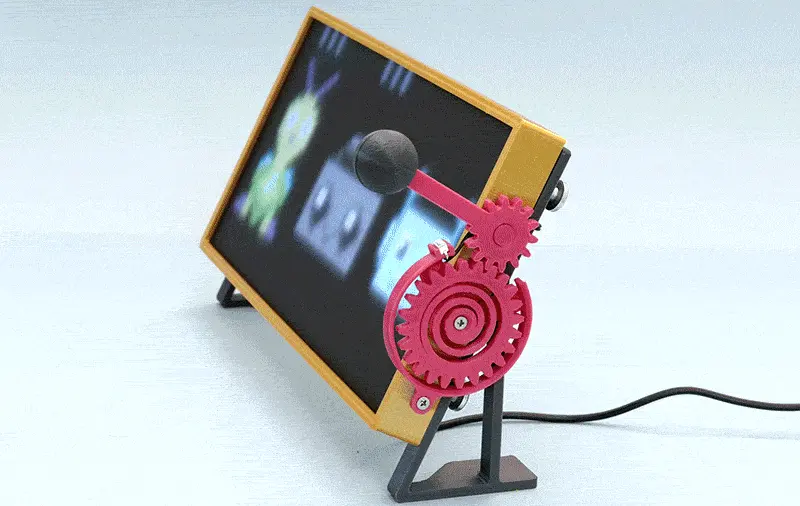
This is a delightful example of how mixing 3D printing and electronic components can be both fun and educational. By combining an LED panel, a microcontroller, and some 3D printed parts, you can create your own homemade slot machine with Circuit Playground emojis. In addition to the visuals, the device also features sounds to add even more excitement to the game.
Not only will you learn and challenge yourself when putting this project together, but you’ll also get to have plenty of fun afterward!
The modular design of the microcontroller makes it easy to attach it to the back of the RGB module, and the sound amplifier is adapted with one of the 3D printed parts. For the finishing touch, a thin black acrylic board is used, allowing the images to appear smoother without showing the individual points of each LED in the matrix. You can download the complete code on GitHub, and for the 3D printed parts, you can make it as amusing as you want by using different colors of filaments or even going for glow-in-the-dark options.
- Designer: adafruit
- Difficulty: Beginner
- Core components: 64×32 RGB LED matrix display, Adafruit Feather M4 Express, RGB matrix Featherwing kit, audio amplifier, 3D printed parts
- Project page: Thingiverse, Adafruit
AI Assistant
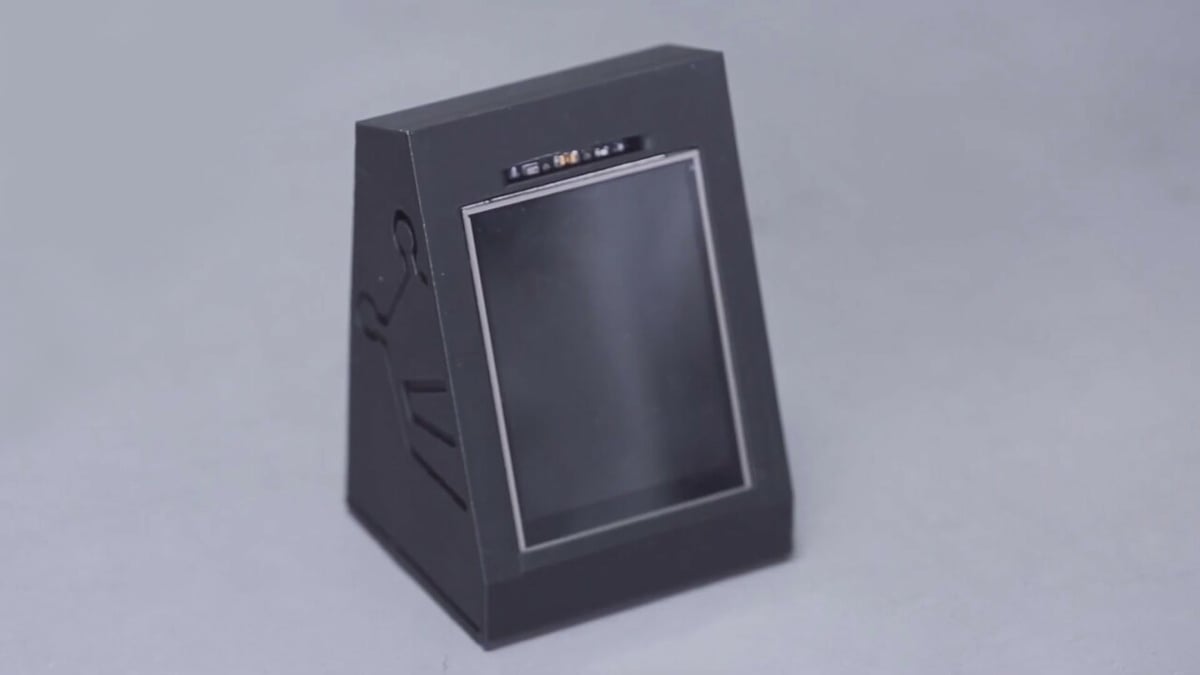
AI assistants are a great help in many situations, but what do you do when you ask for a recipe with many ingredients, and it rattles off everything too quickly for you to jot down? Well, in that case, it’s better to have the answer visible to you to review at your own pace! This assistant displays everything transcribed on the screen so you won’t miss any details.
Despite using cutting-edge technology, you don’t need to worry about programming as the complete code is available and the instructions are thorough and clear.
To activate the device once it’s set up, just touch the screen and speak to the AI, which uses the Azure Speech integration with ChatGPT for human-like natural language. You’ll need to create an authentication key for both Azure and ChatGPT, but there are tutorial links in the instructions in case you’re unsure how to do that. The project uses Python as the programming language, making it beginner-friendly. There’s also an alternative programming option that doesn’t depend on Azure, which the project’s creator also explains in case you want to try a different path.
- Designer: DFRobot
- Difficulty: Beginner
- Core components: Unihiker IoT SBC with touchscreen, mini audio stereo amplifier, stereo enclosed speaker, 3D printed parts
- Project page: Hackster
Air Quality Monitor
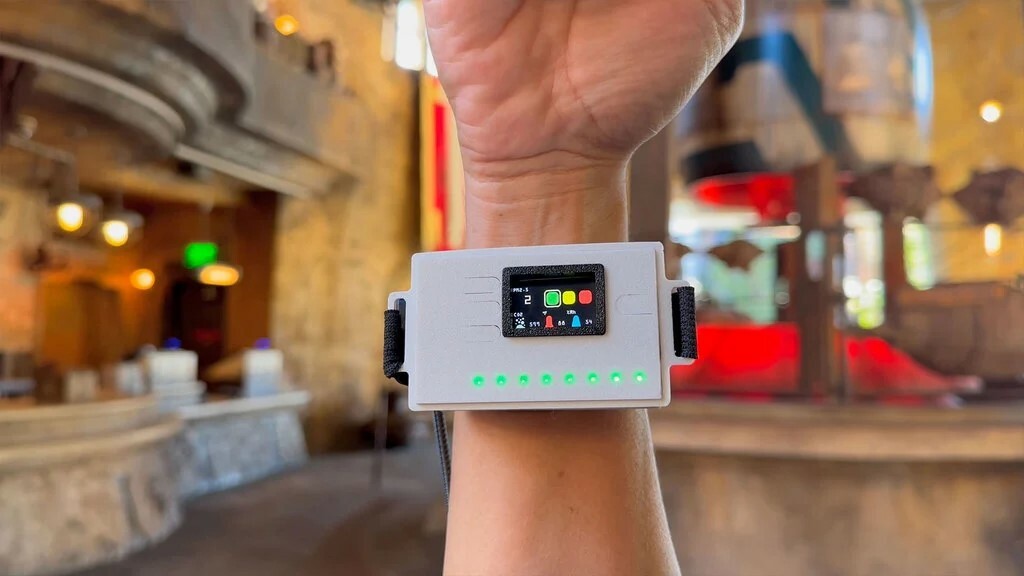
Because of the ongoing challenges of global warming and its consequences, many are making efforts to reduce environmental pollution and deal with air quality issues. While some view it as a matter of improving the quality of life, for those with existing health problems, especially respiratory issues, these latter issues become a constant concern. Enter this air quality monitor, designed to be both portable and fixed.
Featuring a colorful display and LED indicators providing real-time readings, this monitor allows you to view reports and sensor data through a web interface. You can keep track of humidity, temperature, and CO2 levels from a distance. The three quality levels are conveniently indicated by red, yellow, and green lights. As it contains an integrated screen, the Adafruit Esp32-S2 Reverse TFT Feather is a great choice to make the project more compact given that it already includes (as its name suggests) a TFT display.
- Designer: adafruit
- Difficulty: Beginner
- Core components: Esp32-S2 Reverse TFT Feather, NeoPixel stick, air quality breakout module, CO2 temperature and humidity sensor, 3D printed parts
- Project page: Thingiverse, Adafruit
Arduino Metal Detector Robot
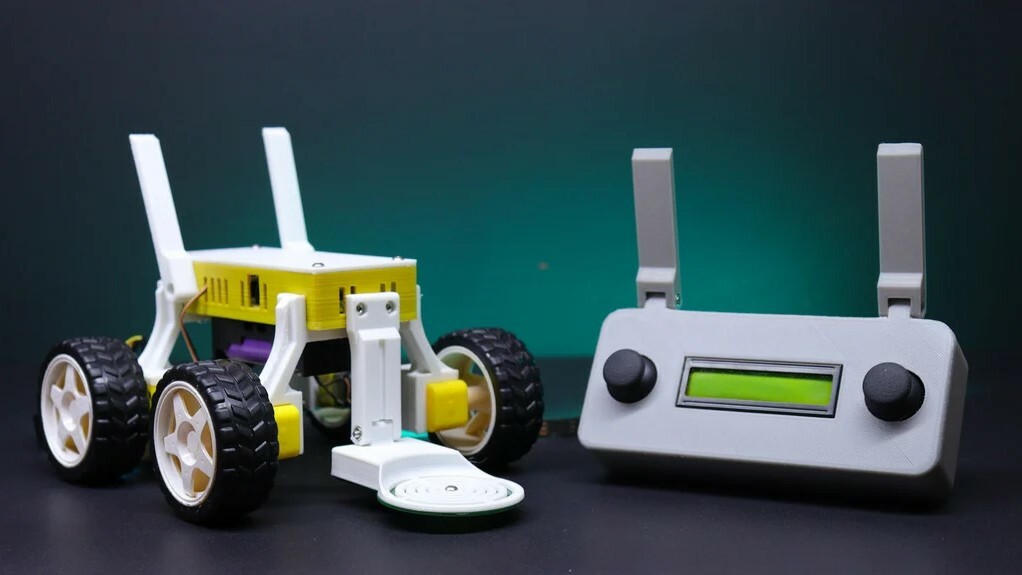
The Arduino RF Nano, when equipped with wireless communication, becomes an excellent choice for creating a metal detector robot. Whether looking for a lost keychain on the beach or buried treasures in the garden, it can be of great help!
A comprehensive video tutorial showcases all the details of its construction. The controller, also crafted from scratch for this project, utilizes simple universal electronic boards and jumper wires, providing a great opportunity to practice soldering skills.
A second Arduino RF Nano is employed in the controller, and the entire setup is powered by rechargeable 18650 model batteries. Although the links to the parts and modules used in the YouTube video are outdated, these common components can be easily found in online stores, such as the metal detector kit available at Amazon. This module kit is particularly interesting as it includes a buzzer and a power button. When it comes to the 3D printed parts, some may require support, but the recommended infill is less than 30%.
- Designer: DIY_Builder
- Difficulty: Beginner
- Core components: Arduino RF Nano, LCD display, joystick push button module, metal detector module, 3D printed parts
- Project page: Thingiverse
Fingerprint Safe
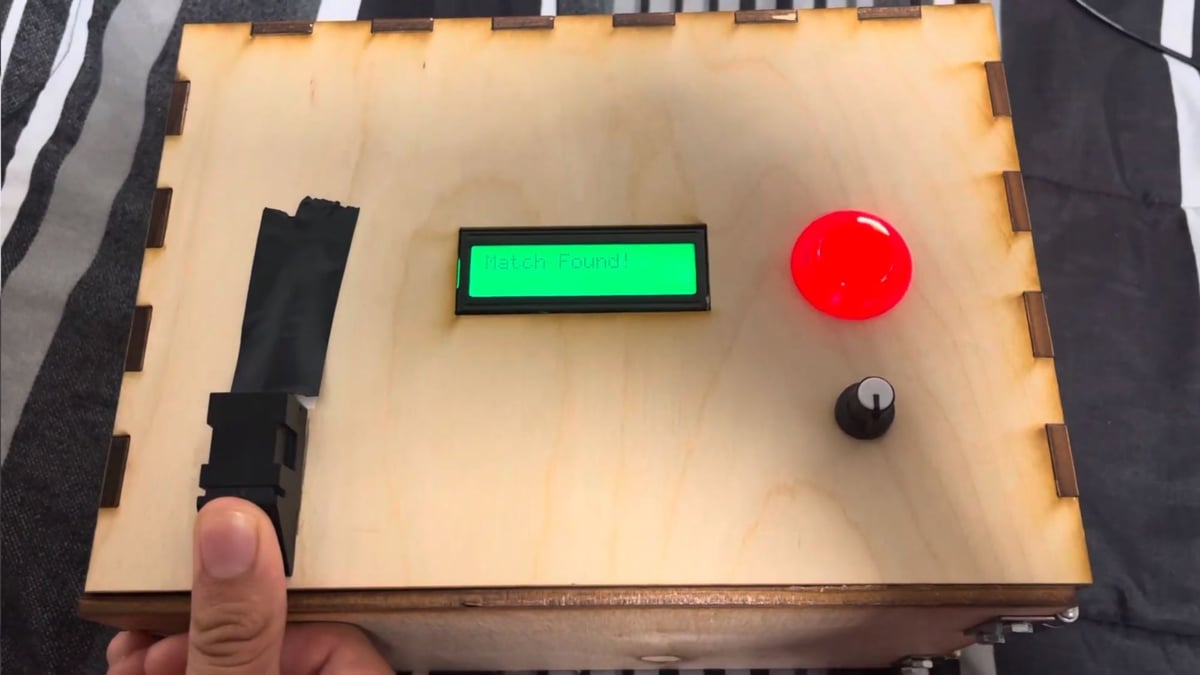
Here’s a clever device born from the creativity of its creator, demonstrating that doesn’t always require much effort or time to create something special and useful. Building your own electronic safe might not be a bad idea if you’re looking to store some special snacks and treats that tend to disappear without you even noticing.
The safe is designed to be as straightforward to use as can be, given that there’s no need to memorize a password; you simply scan your fingerprint. Since it’s made of wood, you’ll need a laser cutter or to order the case parts. It’s also interesting to note that you can customize the size of the box on the Maker Case website, so you can create your own to fit your treasures, no matter what size. Only one part is 3D printed, which is the door latch slot, and the schematics for putting all the devices together can be found on GitHub.
- Designer: JJ Tellez, Erik Welsh
- Difficulty: Intermediate
- Core components: PocketBeagle, 16×2 RGB backlight LCD, optical fingerprint reader sensor module, arcade button with LED, 3D printed parts
- Project page: Hackster
Face-Following Robot
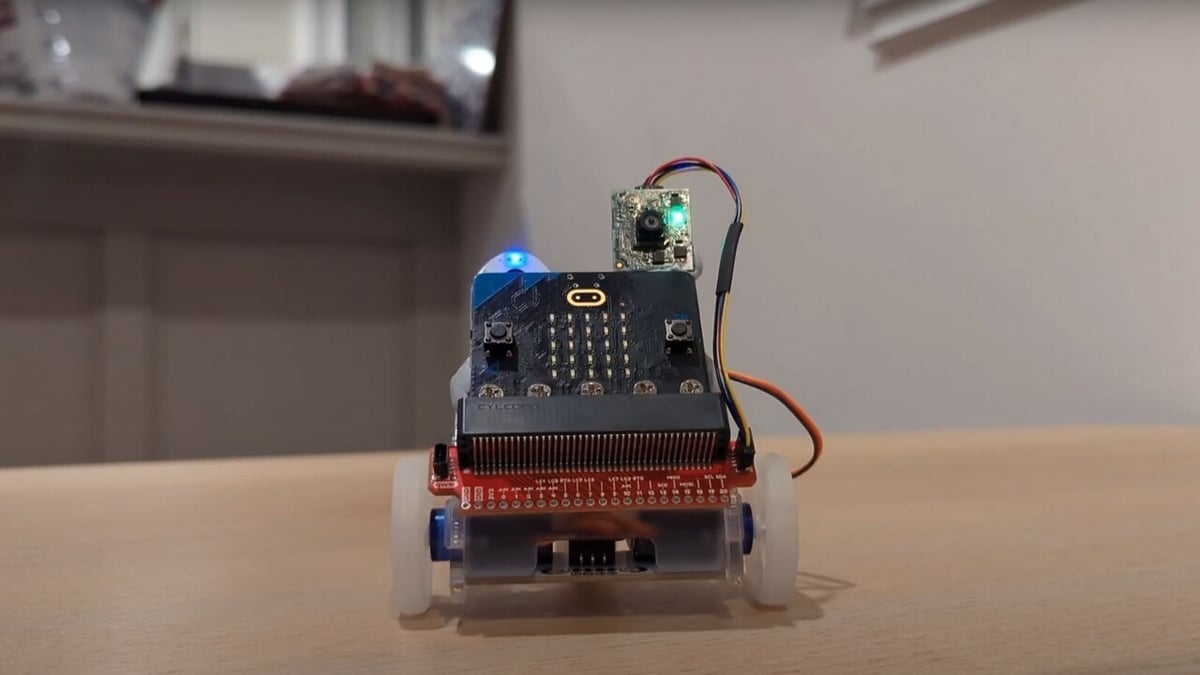
If you want to have fun creating something modern and intelligent without dealing with anything too complex, this is a great choice. The Micro:Bit is a highly versatile microcontroller, making it easily integratable with smart sensors. Here, a sensor capable of not only detecting but also identifying and recognizing faces is used, allowing this robot to follow a recognized person.
The mobile structural parts of the robot are sold as a kit along with the board, and the author notes that the breakout connector is an optional addition meant to simplify assembly; otherwise, you can solder the wires directly to the board. Another important point is that Python is used for programming, making the project easily adaptable if you’re familiar with the language.
- Designer: Pete Warden
- Difficulty: Intermediate
- Core components: BBC Micro:Bit, person sensor, ElecFreaks Ring:Bit V2 Kit Micro Car
- Project page: Hackster
BrailleBot
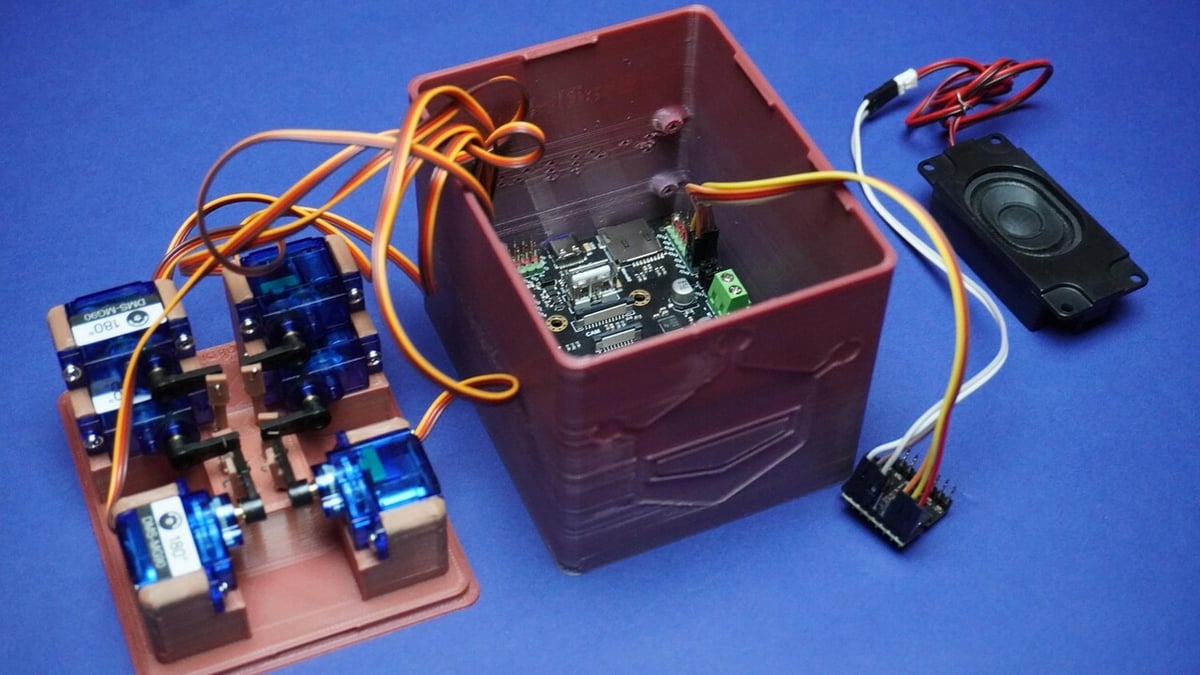
Among the myriad possibilities with electronic components and 3D printing, investing time and resources in creating an accessibility tool for someone with visual impairments is a remarkable endeavor. This robot can display Braille letters sequentially, easily forming a word one letter at a time. While it may seem simple, it can make a difference in someone’s life.
In total, six servos are employed to move the pins that form each Braille character, and two additional crucial features further assist the user. The first involves integrated speakers, providing an excellent resource for more complex situations and, to add to the learning experience, an audio complement. The second includes two touch sensors on the sides of the device, aiding in navigation and selecting the alphabet system that one wants to learn.
- Designer: Mukesh Sankhla
- Difficulty: Intermediate
- Core components: Romeo Esp32-S3 development board, DFPlayer, touch sensor, speakers, servo motors, memory card, 3D printed parts
- Project page: Hackaday
Framework Cyberdeck

This project deviates from using a traditional SBC and instead employs a modular computer within a DIY structure with a microcontroller. It’s particularly intriguing because it enables seamless use of Windows with performance akin to a laptop, all in a compact and versatile device. In addition to incorporating parts from a modular laptop, this project features an integrated Arduino Pro Micro with digital and analog outputs for electronic testing.
In total, there are 10 pins, including 5V, GND, 2 analog, and 6 digital pins, providing sufficient connectivity for testing various projects and components. In the accompanying YouTube video, the author demonstrates controlling a robotic hand through a trackball, to give an example of what’s possible. Given that the core of this project is a modular laptop, it allows for interchangeability with other expansion modules that can prove highly useful.
- Designer: Ben Makes Everything
- Difficulty: Intermediate
- Core components: Framework laptop parts, Arduino Pro Micro, LCD screen, USB-C Hub, RAM, keyboard, 3D printed parts
- Project page: GitHub, YouTube
Thermal Camera
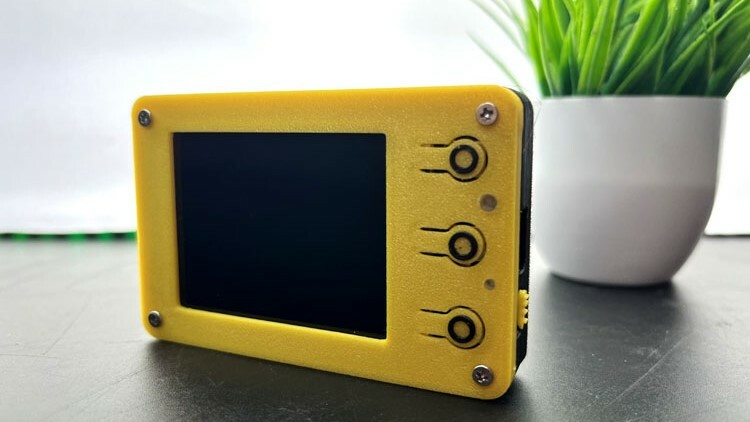
Currently, the market offers an immense variety of parts, sensors, and electronic components that are compatible with powerful SBCs. This presents a significant opportunity for makers to transform a few pieces, wires, and a few grams of plastic into a powerful tool. In the past, one would have needed to search through stores, only to find high prices. Now, the accessibility of these components opens up new possibilities for cost-effective innovation.
A thermal imaging camera can have many applications, including checking the overload and temperature in a given circuit to make a repair. So, this can be a great project to replicate and use for more electronics projects!
This project is open-source with a user-friendly graphical interface and numerous features, including different temperature readings, 5 interpolation modes, and 10 color pallets. It’s also a great opportunity to venture into custom PCBs if you haven’t tried that before. You’ll find a detailed list of components on the project’s main page, and the printing models and code are available at Thingiverse and GitHub.
- Designer: Jobit Joseph
- Difficulty: Advanced
- Core components: Custom PCB, Esp32-Wrover, MLX90640 sensor, TFT display, 3D printed parts
- Project page: Circuit Digest
Pi-lomar
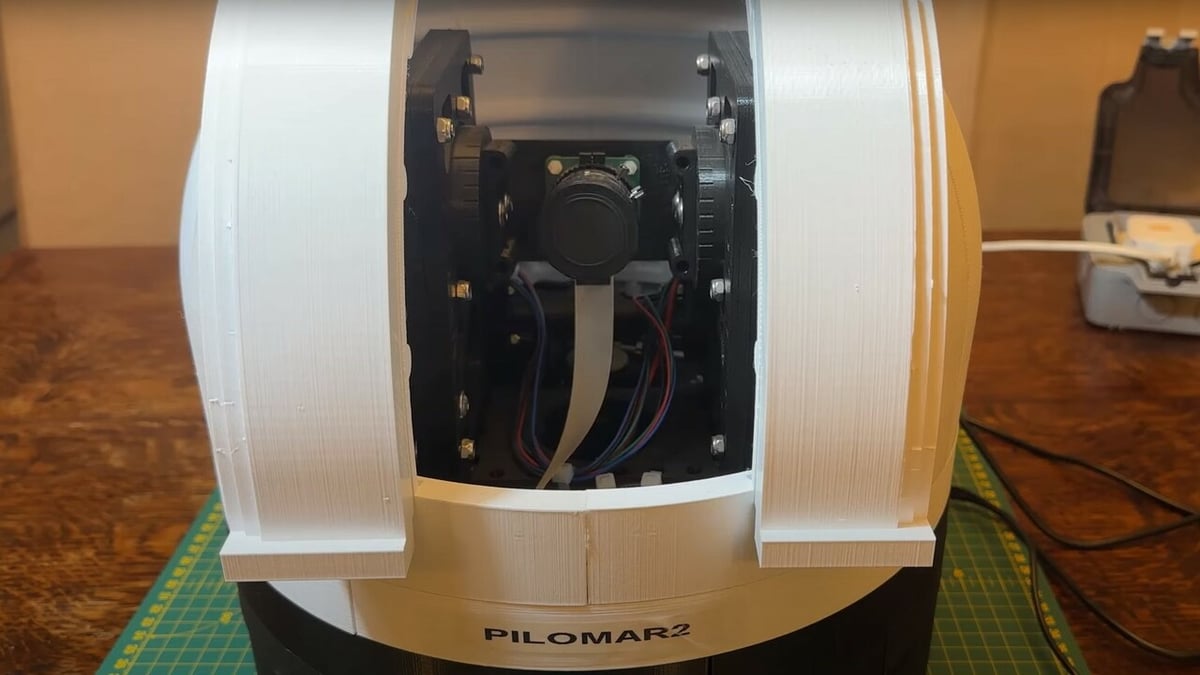
When you love the stars as much as technology, one of the best things you can do is build your own observatory. Of course, this project won’t be as powerful as other expensive telescopes, but you can certainly capture interesting images and learn a lot about astronomy. The observatory is designed to be remotely controlled, so if you have a wireless network within reach, you can easily operate it.
The project’s creator emphasizes that it wasn’t built to withstand the elements, so it shouldn’t be left exposed to the weather and should be stored when not in use. As the project involves a considerable amount of material for printing parts, the creator also recommends starting with the electronic stages. It’s also important to consider that there are moving parts that can be dangerous when in motion due to the force of gears and motors.
- Designer: MattHh
- Difficulty: Advanced
- Core components: Raspberry Pi 4, stepper motor driver carrier, Raspberry Pi Hi Quality Camera Sensor, 16-mm telephoto lens, Pimoroni Tiny 2040, 3D printed parts
- Project page: Instructables
License: The text of "The Best DIY Electronics Projects for 2024" by All3DP is licensed under a Creative Commons Attribution 4.0 International License.





